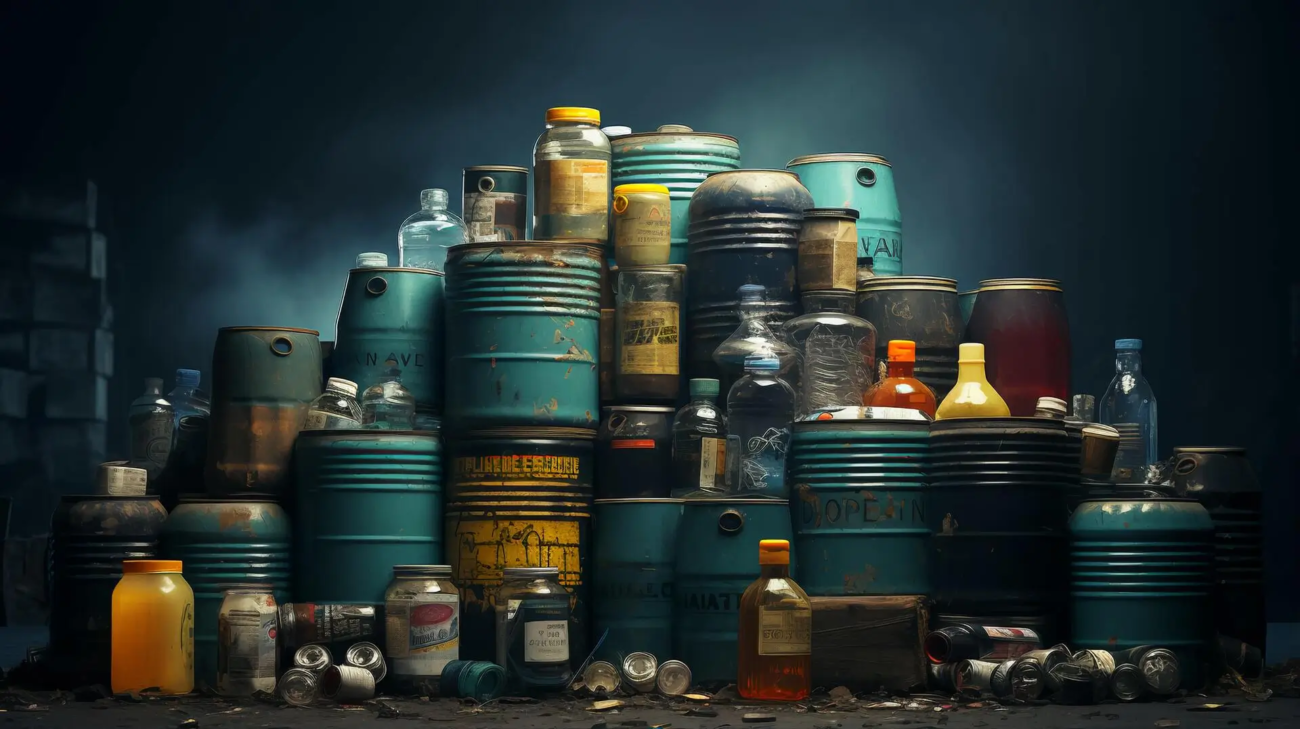Corrosive chemicals, like strong acids and bases, are commonly used in labs, manufacturing, and maintenance facilities. But if they are not stored properly, they can cause serious injuries, property damage, and even fires or explosions.
To prevent accidents, several U.S. agencies, including OSHA, NFPA, and EPA, have rules on how to store corrosives. These rules cover how to organize, label, and store these substances safely in workplaces.
This guide explains those requirements in the simplest terms, so you can follow the law and keep your team safe.
What Are Corrosive Chemicals?
Corrosives are substances that destroy or damage other materials (especially living tissue) on contact. They can eat through metal, burn skin, and release harmful fumes.
Common corrosives include:
- Sulfuric acid (used in batteries and cleaning)
- Hydrochloric acid (used in pH control)
- Sodium hydroxide (used in soap-making and drain cleaners)
- Ammonia solutions
- Nitric acid
These chemicals can be found in solid, liquid, or gas forms.
Key Regulations That Apply
Multiple laws cover how corrosives must be stored in the U.S.:
1. OSHA’s Hazard Communication Standard (29 CFR 1910.1200)
- Requires employers to label all containers clearly
- Must provide Safety Data Sheets (SDS) for each corrosive chemical
- Must train workers on the hazards and storage instructions
2. OSHA’s Laboratory Standard (29 CFR 1910.1450)
- Applies specifically to labs
- Requires a written Chemical Hygiene Plan that includes safe storage
- Chemicals should be stored by compatibility, not alphabetically
3. NFPA Codes (e.g., NFPA 45, NFPA 400)
- NFPA gives storage limits based on fire and reactivity risks
- Requires proper storage cabinets for corrosive liquids
- May require spill control and secondary containment
4. EPA’s Hazardous Waste Regulations (40 CFR Part 264)
- For facilities generating corrosive waste
- Requires storage in containers that won’t react with the chemical
- Must use proper labeling and waste handling
Storage Basics: What You Must Do
1. Use Compatible Containers
Corrosives must be stored in containers that won’t react with them.
- Acids should be kept in glass, certain plastics (like HDPE), or corrosion-resistant metal
- Bases like sodium hydroxide can degrade glass, so use plastic instead
- Never store corrosives in food containers or reused bottles
2. Label Everything Clearly
All corrosive containers must have:
- The chemical name
- A hazard warning (e.g., “Corrosive, Causes Burns”)
- Manufacturer name and contact info
Labels must match the Safety Data Sheet (SDS). For mixtures or solutions, list the main ingredients.
3. Segregate Acids and Bases
Never store acids and bases together. If they mix, they can violently react and release heat or toxic gas.
Keep them in separate cabinets or areas, with enough space between them to avoid contact.
Also:
- Keep oxidizers away from organic acids (e.g., nitric acid + acetic acid is a fire hazard)
- Never store flammables with corrosives in the same cabinet
4. Use Corrosive-Resistant Storage Cabinets
Corrosive cabinets are usually made of:
- Epoxy-coated metal
- Polyethylene plastic
- Stainless steel
Features to look for:
- Self-closing doors
- Spill containment at the base
- No metal shelves (they may corrode)
Cabinets should be:
- Clearly labeled (e.g., “Corrosive Storage”)
- Kept at or below eye level
- Not placed near exit doors or in direct sunlight
Ventilation and Temperature Control
Corrosive fumes can damage your lungs and nearby equipment. Good ventilation helps avoid this.
- Cabinets with ventilation ducts may be required in labs (check local codes)
- Avoid storing corrosives near heat sources, which can increase vapor pressure or cause reactions
- Ideal temperature: cool, dry, and consistent
Spill Control and Emergency Access
1. Spill Kits
All areas with corrosives must have spill kits nearby. A basic spill kit should include:
- Neutralizing agents (acid or base neutralizer)
- Absorbent materials
- Chemical-resistant gloves and goggles
- Waste disposal bags
Train staff on how to use the kits.
2. Emergency Equipment
Workplaces must also have:
- An eyewash station within 10 seconds’ reach of corrosive storage
- A safety shower in case of larger exposure
- Easy access to SDSs for quick reference
Safe Handling Practices
Even with good storage, risks remain during transfer or use. Train all workers to:
- Wear PPE (goggles, face shields, gloves, lab coat)
- Use a tray when moving corrosive bottles
- Never mix chemicals unless trained and authorized
- Use a fume hood when working with volatile corrosives
Waste Storage Rules
If your site generates corrosive waste, EPA has extra rules:
- Use DOT-approved containers
- Label as “Hazardous Waste – Corrosive”
- Track and document waste disposal
- Store for no longer than allowed under your generator category
Keep waste separate from unused products and use secondary containment.
Storage Limits and Quantities
Storage quantity limits vary based on:
- Building type
- Room size
- Fire protection systems
Typical lab limits (based on NFPA 45):
- Up to 10 gallons of Class A corrosives (strongest)
- Larger quantities need flammable/corrosive storage cabinets
- Keep only what you need in the work area, store bulk supplies in a chemical storeroom
Always check with local fire codes or building officials, they may be stricter than federal rules.
Inspections and Recordkeeping
Regular inspections help prevent accidents.
Your safety team should:
- Check labels and container condition weekly
- Record cabinet temperature or damage
- Replace missing PPE and refill spill kits
- Keep training and SDS logs updated
All of this helps show OSHA or EPA inspectors that you follow legal requirements.
Final Thoughts
Storing corrosive chemicals safely isn’t just about avoiding burns or damage, it’s the law. OSHA, NFPA, and EPA all require clear labeling, proper cabinets, smart segregation, and access to emergency tools.
By organizing your storage properly, training your team, and following basic rules, you can keep your lab or facility safe and compliant, no matter how many corrosive substances you work with.



